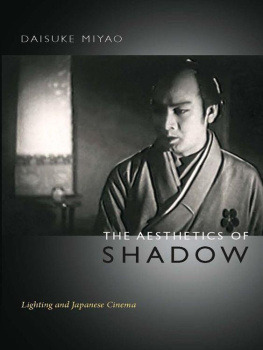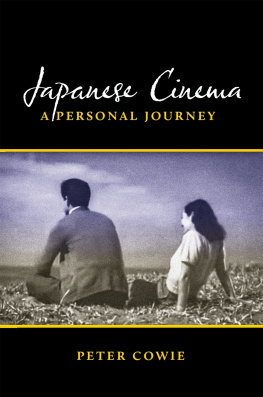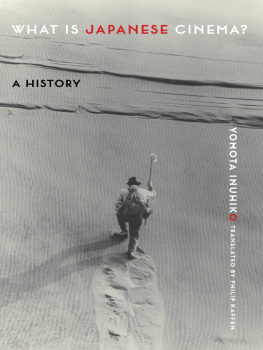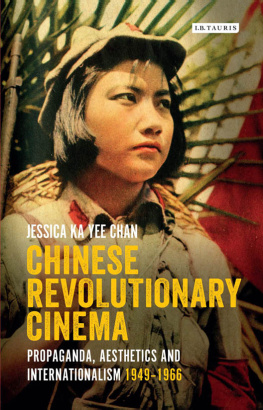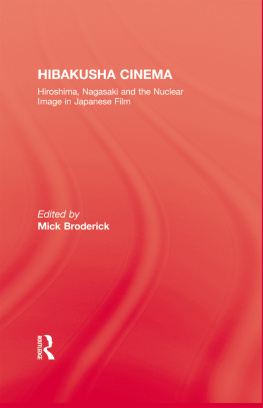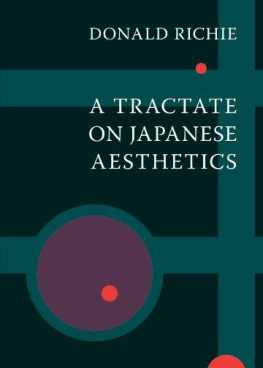ACKNOWLEDGMENTS
I am eternally grateful to the late Robert Sklar, my mentor. I had countless joyful moments with him when we talked about films and books. With his generosity, patience, and continuous encouragement, I have been able to transform myself from a nave student from Japan who knew very little about the practice of cinema studies into a little more articulate film historian. Thank you so very much, Professor Sklar.
I owe so much to the big heart of the late Keiko I. McDonald. It was my great pleasure to report the progress of my research to her at annual conferences. Our meetings were always after her daily ten-mile run, and she always amazed me with her positive energy. I am sorry that I did not have a chance to run the historic Hayward Field with Keiko-sensei, who was a University of Oregon alumna.
Special thanks go to Ken Wissoker of Duke University Press. Ken was the very first person who listened to my initial rough idea about writing a transnational history of cinematic lighting. It was in Chicago in 2007 when my book on Sessue Hayakawa came out. He has been enthusiastic about this project ever since and guided me through a long and winding road. This book is a collaboration between Ken and me.
As my project involved extensive research both in the United States and Japan, I have been very fortunate to be assisted by many institutions. I thank above all Charles Silver at the Museum of Modern Art, Film Study Center in New York;Okajima Hisashi, Okada Hidenori, Tochigi Akira, Irie Yoshiro, and Itakura Fumiaki at the National Film Center, the National Museum of Modern Art, Tokyo; Wachi Yukiko, Fukuda Atsuko, and staff members at Kawakita Memorial Film Institute; Moriwaki Kiyotaka at the Museum of Kyoto; Yasui Yoshio at Kobe Planet Eiga Shiryokan; Barbara Hall at the Margaret Herrick Library of the Center for Motion Picture Study; Mona Nagai and Jason Sanders at the Pacific Film Archive; John Mhiripiri at the Anthology Film Archive; and staff members at the University of Oregon Knight Library's Interlibrary Loan Office. I have also benefited greatly from my visits to the New York Public Library for Performing Arts, UCLA Department of Special Collections, Tsubouchi Memorial Theater Museum at Waseda University, the National Diet Library, and Shochiku Otani Library.
An ACLS/SSRC/NEH Fellowship, Center for the Study of Women in Society Research Grant, Oregon Humanities Center Research Fellowship, Richard A. Bray Faculty Fellowship, and other internal research grants at the University of Oregon provided me with precious time and funding to complete this book.
Kotani Eiichi, Kurita Toyomichi, Miyagawa Jiro, Okada Mariko, Wakao Ayako, and Yoshida Kiju shared precious stories of Japanese filmmaking with me.
I am deeply grateful to Steven Brown, Rebecca Fowler, Hideaki Fujiki, Tom Gunning, Elise Hansen, Ab Markus Nornes, and Yomota Inuhiko, who kindly read sections of this book at various stages and gave me valuable comments and encouragements.
Cheers to Kathleen Karlyn, Mike Aronson, Priscilla Pea Ovalle, Sangita Gopal, Katharina Lowe, Kate Mondloch, Audra Mahoney, and the faculty and the staff of the Cinema Studies Program at the University of Oregon. I am honored to share the love of cinema with you.
Among many friends, colleagues, and mentors on both sides of the Pacific who have provided invaluable professional and emotional support, I would like to particularly thank Charles Affron, Dudley Andrew, Chris Arnold, Keri Aronson, Kathryn Barton, Jennifer M. Bean, Betty Chen, Stephen Durrant, Maram Epstein, Robert Felsing, Funatsu Akiko, Aaron Gerow, Carol Gluck, Frances Guerin, Heidi Johnson, Patrick Keating, Chika Kinoshita, Hiroshi Kitamura, Colleen Laird, Tom LaMarre, Jean Ma, Matsudo Makoto (Pinewood Company), Matsui Jun (Heibonsha), Shannon McLachlan, Mizuno Sachiko, Shogan Naidoo and the YMCA marathongroup in Eugene (for keeping me fit physically and mentally), Miwako Okigami, Ota Yoneo (Toy Film Project), Misa Oyama, Augusta Lee Palmer, Michael Raine, Donald Richie, Saito Ayako, Tze-lan Sang, Miryam Sas, Shibata Motoyuki, Irina Shport, William G. Simon, Ben Singer, Takeuchi Shigehiro (Eiga shiryo no kobeya), Alan Tansman, Patrick Terry, Noboru Tomonari, Mitsuyo Wada-Marciano, Akiko and Glynne Walley, Kristen Whissel, Linda Williams, Mari Yoshihara, Mitsuhiro Yoshimoto, and Zhang Zhen.
Leigh Barnwell and Liz Smith at Duke University Press have patiently guided me through the book's editorial and production processes.
I also thank enthusiastic audiences of my talks at the University of California, Berkeley; Carleton College; the University of Maryland; Stanford University; the Association for Asian Studies; Kinema Club; and the Society for Cinema and Media Studies.
I would like to sincerely thank Nishimura Taro, Matsumoto Toshio, Tatsumi Takayuki, and the faculty of letters at Keio University, and Notoji Masako, Kunishige Junji, and the faculty of American studies at the University of Tokyo, Komaba, for their tremendous kindness.
I am very grateful to my parents, Miyao Shunsuke and Masami, for always believing in me, and to my parents-in-law, Akagi Sadao and Kimiko.
Lastly, very, very special thanks go to the loves of my life: Yoko, Dica (who is at Rainbow Bridge), Dot, and Hoku. Without you, I will be lost in the shadow. With you, I can be bright and cheerful.
INTRODUCTION
WHAT IS THE AESTHETICS OF SHADOW?
The aesthetics of shadow [kage no bigaku] that Japanese people created over a long period of time throughout long years stays deep inside of ourselves no matter how much social tendencies change. We want to bring out the aesthetics of shadow from its hidden place, understand it correctly, and do our best to create Japanese cinema. So wrote Yoshino Nobutaka, a production designer at Shochiku, one of the major film companies in Japan, in the journal Eiga Shomei in 1979. Even before the process of projection, the production of moving photographic images is a construction in light and shadow. Even digital cameras need light to input information to be transformed into data. It is therefore no surprise that the Japanese production designer particularly noted lighting in Japanese cinema. What attracts me in Yoshino's words, though, is his strong emphasis on shadow. What is the aesthetics of shadow that he believed to be very important in Japanese cinema?
In fact, Yoshino's claim faithfully replicated the well-known writing by renowned novelist Tanizaki Jun'ichiro, In Praise of Shadows (Inei raisan, December 1933-January 1934). In his discussion of Japanese architecture, Tanizaki writes, Ultimately, it The notion that Yoshino called the aesthetics of shadow had already been widely shared among Japanese cinematographers by the early 1940s.
Curiously, however, the expressivity of shadows had not been emphasized in the dominant mode of film lighting in Japan before Tanizaki wrote In Praise of Shadows. The slogan in the first decades of filmmaking in Japan was Clarity first, story second (Ichi nuke, ni suji

